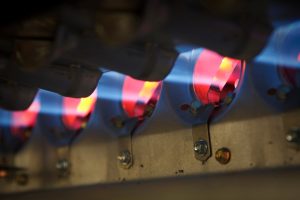 With winter fast approaching, temperatures are dropping every day. Now is the time to install a new heating system in your home, especially if your older one isn’t up to the task of keeping your home warm for another winter. Getting a new system put in now means not having to worry about your old heater breaking down just when you need it the most, or snow or similar inclement weather making a replacement session more problematic. More importantly, replacing your system now gives you the time to make a proper estimate: allowing you to make proper estimates and find the best heater for your home.
With winter fast approaching, temperatures are dropping every day. Now is the time to install a new heating system in your home, especially if your older one isn’t up to the task of keeping your home warm for another winter. Getting a new system put in now means not having to worry about your old heater breaking down just when you need it the most, or snow or similar inclement weather making a replacement session more problematic. More importantly, replacing your system now gives you the time to make a proper estimate: allowing you to make proper estimates and find the best heater for your home.
Chief among the calculations you need to make is the power level in your new heater, which needs to match the precise specifications of your home. The power levels of the old heater are good starting point for you and your service technician to determine the proper power levels, but it goes deeper than that.
Balance Is Key
Most people understand the problems created when a new heater is underpowered. It will run and run all day without ever getting your home warm. The problems often come with the opposite problem: an overpowered heater, which can cause very similar problems when installed in the wrong house.
At first glance, that makes very little sense. Don’t you want the heater to be as powerful as possible? In point of fact, however, you don’t. An overpowered heater will warm the home too quickly, then turn off, only to turn on again a short time later as the cold temperatures lower the temperature. The process is known as short cycling, and is very damaging. Fan motors and other components use far more energy turning on and turning off than they do simply running. Short cycling will increase the strain on the system a great deal: raising bills unnecessarily and causing the new heater to suffer from repair issues far earlier than it should.
The Goldilocks Rule
In order to find the proper power levels for your new heater, we follow what we like to call The Goldilocks Rule — neither too large nor too small but just right. Again, that starts with the power levels of your existing heater, but again, that may no longer be entirely accurate. A trained technician will perform a number of calculations to determine the best power levels for your home, which can include the following:
- Square Footage. Square footage measurements are the most basic factor involved, but extra attention is usually paid to spots in the home that generate extra heat, such as the kitchen and the laundry room.
- Insulation. The amount of insulation in your home will determine how readily it retains heat.
- Sunlight Exposure. Large picture windows, especially those with a western view, will allow more sun in and thus make for a warmer home
For quality heating installation and replacement services in Portland, OR, call on the friendly professionals at Clean Air Act, Inc. to set up an appointment.
Tags: Heating, Heating Installation, Portland

Join Us Online